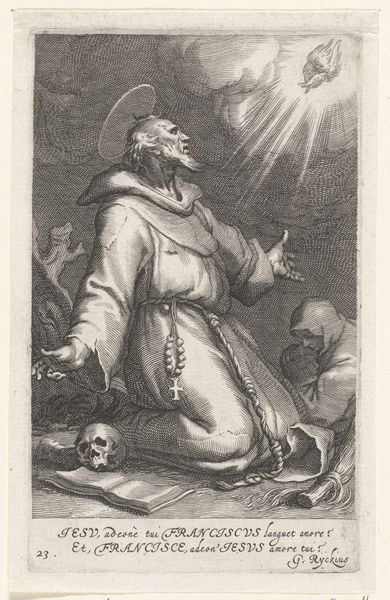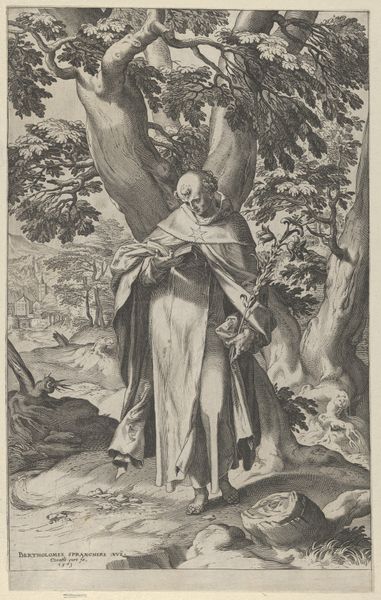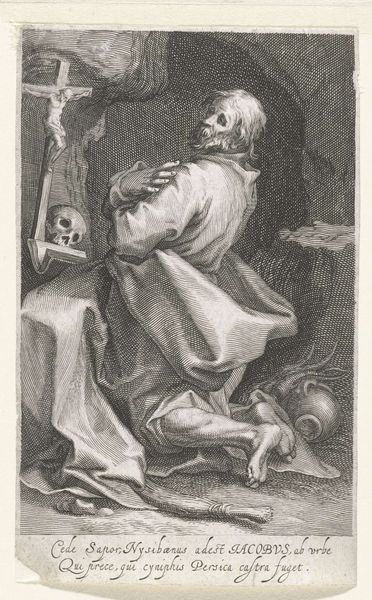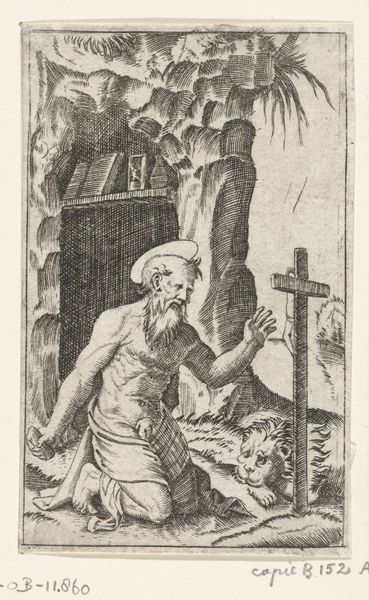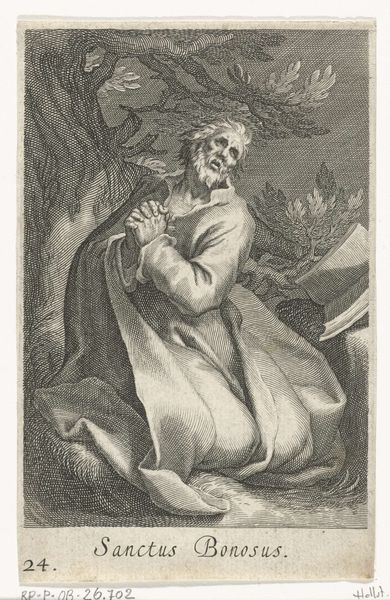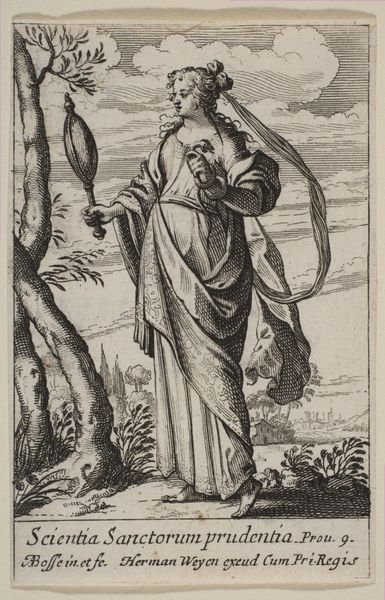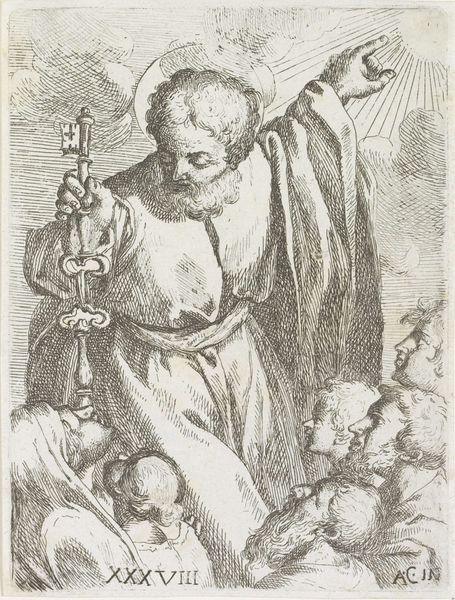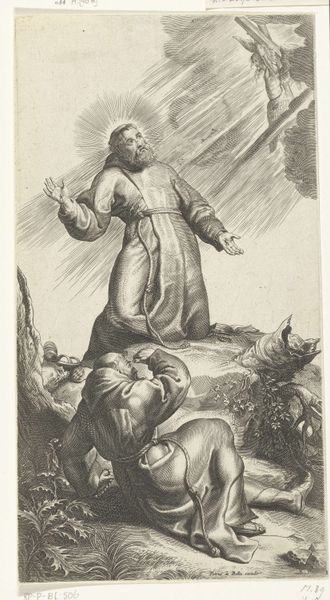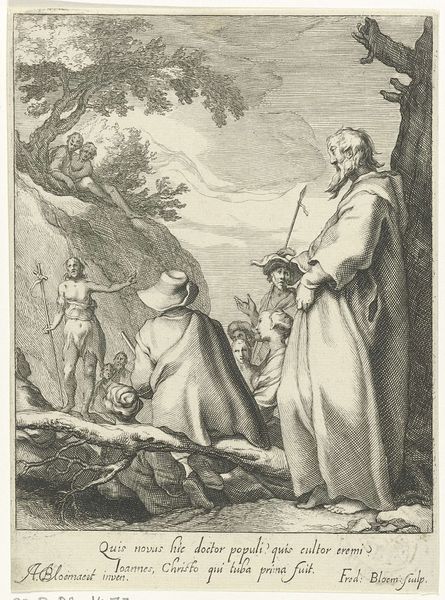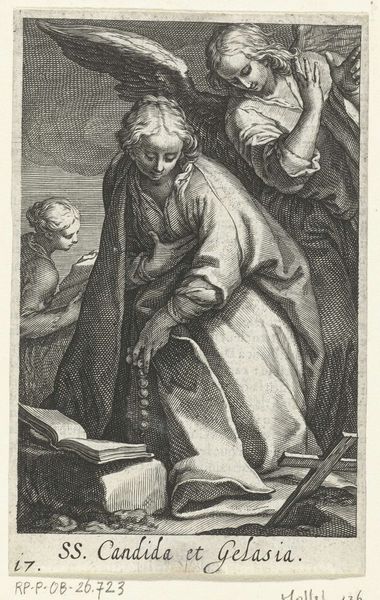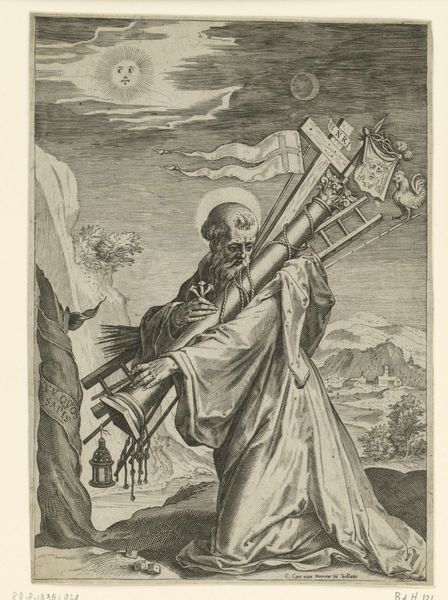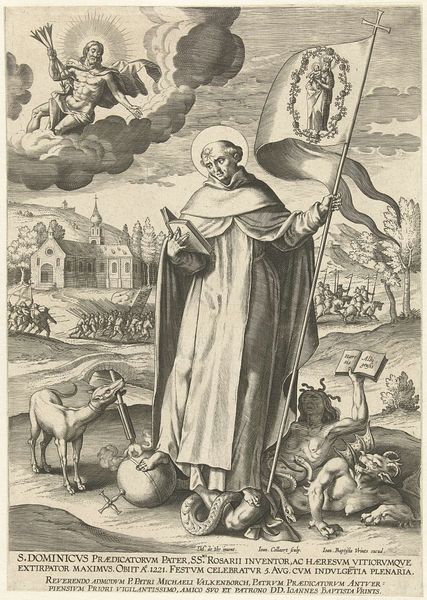
print, engraving
#
narrative-art
# print
#
old engraving style
#
figuration
#
line
#
history-painting
#
northern-renaissance
#
engraving
Dimensions: height 131 mm, width 85 mm
Copyright: Rijks Museum: Open Domain
Editor: Here we have Reinier Vinkeles’ engraving, "Bonifatius hakt de heilige eik om, 720," created between 1800 and 1802. The figures seem very dramatic, almost theatrical, and the stark lines create a sense of intense conflict. What do you make of this piece? Curator: This print depicts a key moment in the Christianization of Germanic lands. Bonifatius, a missionary, is felling the sacred oak, a symbol of pagan belief. The act itself wasn't just about destroying an idol; it was a very public challenge to the existing power structures. Editor: So it's about power, not just religion? Curator: Absolutely. Consider the audience depicted. Some recoil in horror, others watch with curiosity. Vinkeles is showing us a society in transition, where belief systems are literally being uprooted, and societal power is being negotiated. Think about the implications of visually representing such a disruptive moment, especially during a time of revolution in Europe. Editor: It’s like the artist is commenting on how social change is always disruptive, challenging fundamental beliefs... Curator: Precisely. And that the very act of visually recording such a scene helps disseminate new beliefs, shaping public understanding and acceptance. What about the medium itself? Why choose printmaking? Editor: Because engravings allow for mass distribution and a wide reach? Curator: Exactly. It's a powerful way to disseminate visual propaganda. It wasn’t just about depicting history; it was about creating a new one. I learned much, thank you. Editor: This was incredibly insightful. I’ll never see historical prints the same way again!
Comments
No comments
Be the first to comment and join the conversation on the ultimate creative platform.
